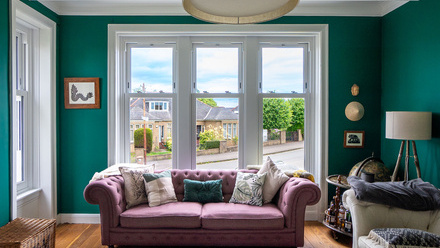Designing for accessibility
An estimated 40% of the population have cognitive and/or sensory impairments (CSI). CSI can be associated with ageing, dementia, autism, mental health conditions, ADHD, PTSD, stroke, and sight and hearing deficits, amongst others, and may require additional design considerations to design fully inclusive facilities.
In a hospital or care home setting where people cannot remove themselves, their health and wellbeing can be adversely affected to such a degree that sedation and antipsychotics are used to compensate for poor design.
Children with autism and ADHD react to environmental triggers in school environments that can cause behavioural challenges resulting in exclusion or additional medication. This is the reality for millions of people every day.
There needs to be greater understanding that we engage and experience our surroundings through our senses and cognitive abilities. To design to meet the needs of people with invisible disabilities we must first understand the challenges they face.
Cognitive impairments
Reduced cognitive ability can result in difficulties with memory, reasoning, judgement, planning, focus and decision making. This can lead to a person experiencing difficulties in finding their way around and engaging with their environment and the people within it.
Being aware of the challenges that cognitive impairment poses for people, we can design to support their needs and reduce the stress and anxiety they experience in poorly designed environments.
Poor design can accelerate both functional (ability to cope with everyday living) and cognitive decline which can severely affect a person's dignity, autonomy and independence.
Sensory impairments
Sensory impairment can affect sight, hearing, taste, smell and touch. This can impact how a person experiences and interacts with their environment. The general perception is we engage with our environment through sight, but we underestimate the input we rely on from our other senses to interpret the world around us.
For example: blind and partially sighted people rely on other senses to compensate for their visual impairment, to make sense of the world and to help navigate it. They use aids such as canes and guide dogs to extend their cognition. 80% of the visually impaired can use their remaining sight to interpret spaces if they are designed to support visual understanding. Through inclusive design interventions, we can support all the senses to assist understanding.
Eight years of research in the field of design for CSI has shown me that whilst each disability may have its own unique symptoms and the way they present, there are two primary design principles that benefit all. It should be noted that the principles may appear simple and obvious, but the execution and science to achieve optimum outcomes is complex and multifactorial.
Light reflective values and contrast are starting points, but inclusive access can only be achieved if a systematic inclusive design approach is built into the project from inception through to completion.
Principle 1 - Reduce sensory clutter
Our primary goal should be to deliver relevant information without overloading the senses. Not creating auditory or visual clutter which will confuse, distract and ultimately lead to frustration and withdrawal. We can use design interventions including light, colour, contrast, texture, acoustic design to compensate for lost abilities and support people to better understand and read their environment.
All the senses should be considered and supported to achieve optimum occupant satisfaction, comfort, access and use. Some basic considerations include:
- Hearing: Optimum acoustic environment, support communication and reduce background noise
- Vision: Enhance visual clarity and reduce visual clutter
- Olfactory: Optimum air quality, pleasing olfactory clues and eliminate unpleasant smells
- Thermal: Control temperature and air movement
Principle 2 - Reducing complexity
We should design intuitive, predictable, legible and familiar environments, aiming to reduce overall design complexity. Visual access and spatial proximity are fundamental requirements. We can also provide cues, prompts and signage to support memory, orientation and wayfinding.
People with cognitive and sensory impairments can find it difficult to understand and filter multiple simultaneous sensory stimuli and may become confused or overwhelmed. We can edit out the irrelevant and emphasise what is important, simplify and design intuitive spaces, thus supporting understanding and remaining abilities.
We have all at some time experienced an environment in which we feel uncomfortable, overwhelmed or even anxious or scared. We must recognise that for some the threshold of tolerance for poorly designed spaces may be higher than that of a person living with CSI. Some people can compensate and adapt while others may be hypersensitive to their surroundings. If we design for people who find it difficult to adapt to their environment and need additional support to stay actively engaged members of our community, we design well for everyone.
Barriers to inclusion and adoption of design principles
There is a lack of awareness and understanding of the issue and the scale of the need within the design profession and the general population.
As designers we must put equal emphasis on aesthetics and inclusion. The former creates first impressions and the latter creates lasting impressions based on ease of use, comfort, accessibility and user satisfaction.
Accessibility ensures we design for a larger percentage of the population. We need to adapt our design practices and guidance to reap the benefits that inclusive design can bring. By not embracing this, we are in essence creating redundant buildings of the future and depriving people of their independence, autonomy and human rights. We must change our design practices if we are to create inclusive environments where people can thrive rather than decline. A new era, a new norm is required.
Common misconceptions when designing for cognitive and sensory impairments:
- Inclusive design implies additional cost
For new buildings or planned refurbishments, this is not the case. If the expertise is included from inception of the project, sensory and cognitively inclusive environments can be constructed at no extra expense. - The designs affect the aesthetics
If a skilled and knowledgeable designer is engaged the aesthetic will not be adversely affected. All supporting interventions can and should be invisible to the untrained eye. A skilled and informed designer can incorporate inclusive elements and design interventions that work seamlessly into the design without compromise. - Required different solutions for different disabilities
Reduced complexity and sensory clutter are common requirements across the CSI population. It is also established that neurotypical and non-CSI individuals share a preference for more peaceful, less complex building with fewer stimuli. Inclusive design works well for everyone.
Inclusive design is a specialist design field which has evolved and advanced greatly in recent years. I hope that designing for the needs of those with cognitive or sensory impairments will become a "new normal".
Looking to the future, I hope people living with CSI can live with greater diginity and independence within environments designed to support their needs.
This article originally appeared in AT Journal issue 145






